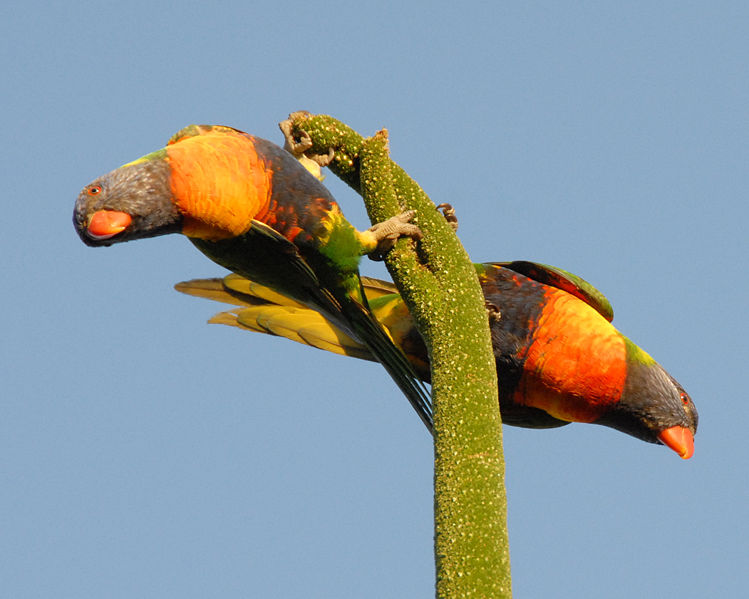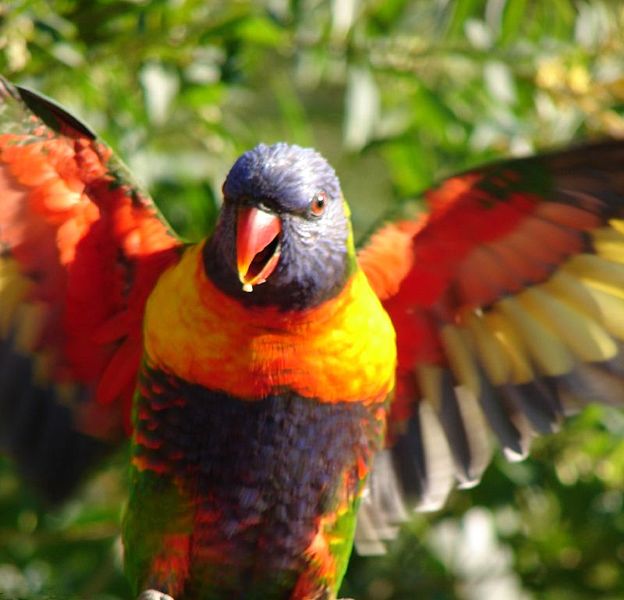All about the rainbow lorikeet:
Adaptation- Birds of a feather flock together!
The rainbow lorikeet has made various adaptations which enable it to thrive in its environment. Rainbows are never seen alone; they will always be in a big group, whether they’re flying or feeding. The main reason for this is for protection. All of the rainbows are on lookout for predators, in particular, goshawks, who have the ability to blend in with their environment. If a rainbow does notice a predator, they will send out an intense, high squawk, and all of the birds will quickly fly away.

Rainbows have short, strong legs, flexible hips, and two
pairs of opposing toes with claws. All of these
adaptations allow them to perform monkey-like acrobatics,
like hanging upside down. Like most other birds,
rainbow lorikeets have large breast muscles, where wings can attach.
This is a major
adaptation that enables them to fly.
Their feathers allow for insulation and flight. Rainbow lorikeets, in particular, are known
for having
powder-down feathers, which allow them to preen.
Preening is a technique in which the tips of these
special feathers break up and release a special powder that
spreads throughout the feathers. This makes the
feathers clean and prevents the rainbows from getting psittacine beak and
feather disease (PBFD).

Another adaptation the rainbow lorikeets have made is to become fairly nomadic. They fly all throughout the day, sometimes over 100 km! This allows them to get quite a variety of food in many different areas. In fact, recently, rainbow lorikeets have adapted to suburban areas, such as Melbourne and Sydney. In these cities, the rainbows are likely to find their pollen and nectar in both exotic and native forms.
Click here to learn about how rainbow lorikeets obtain their food